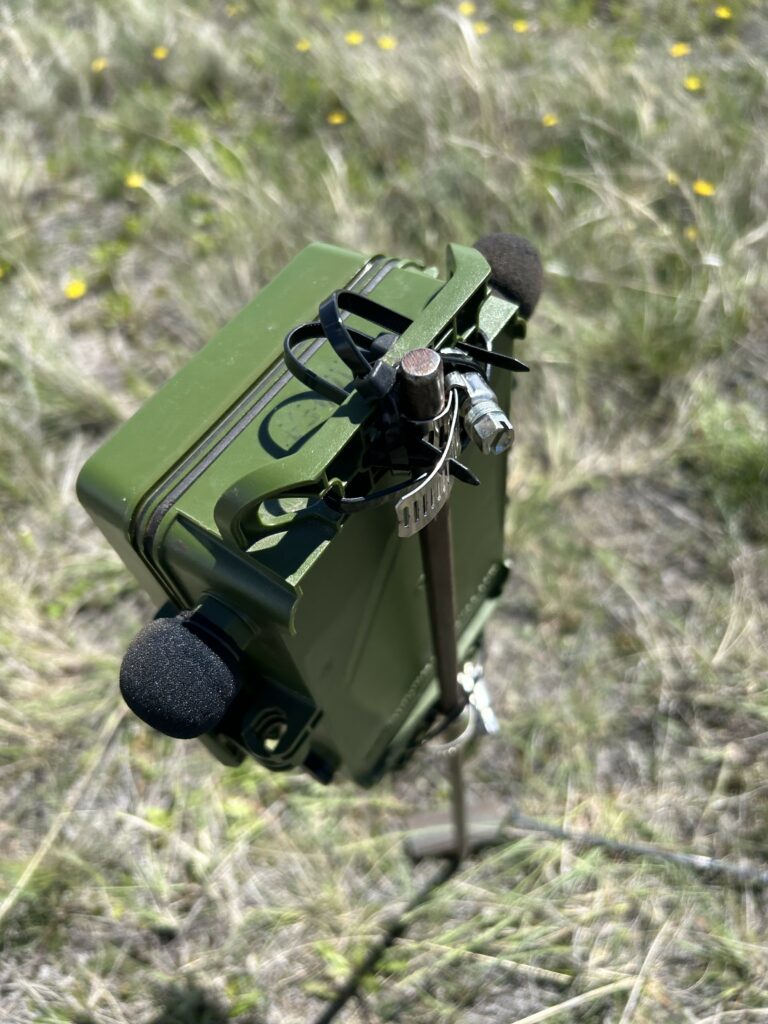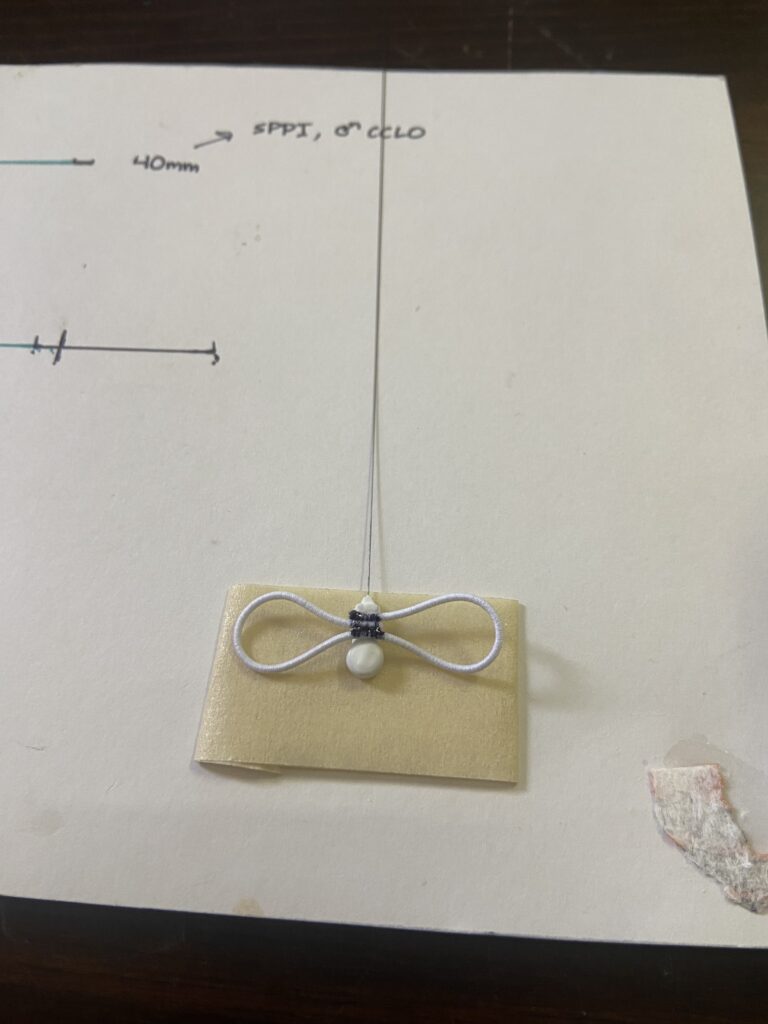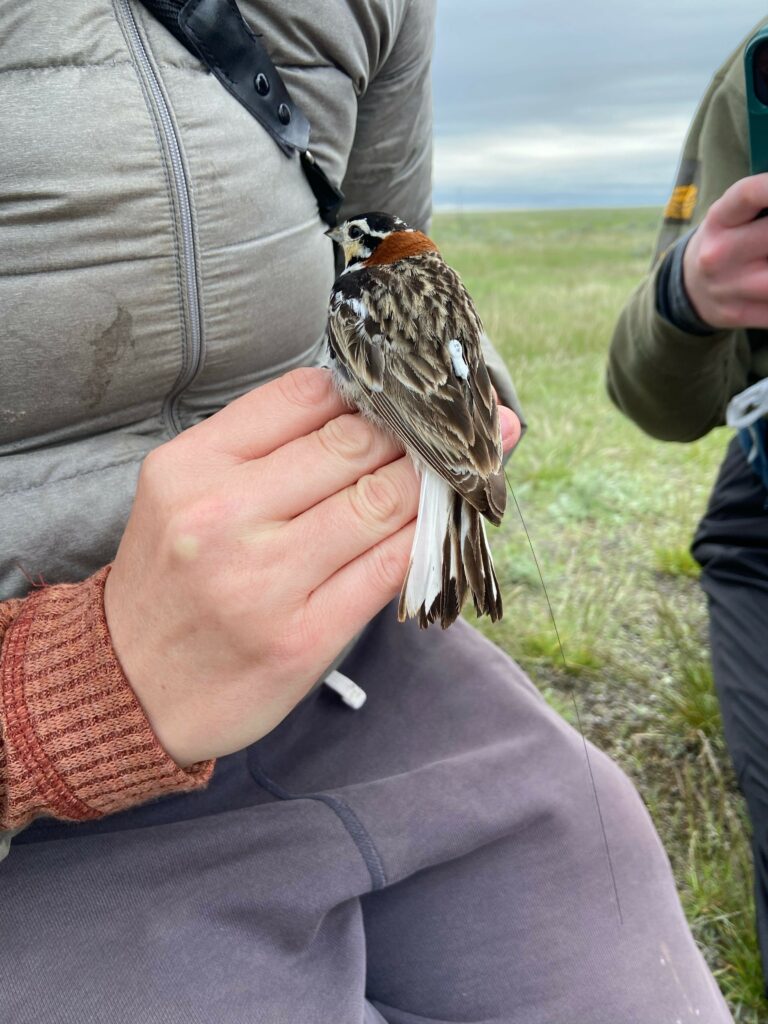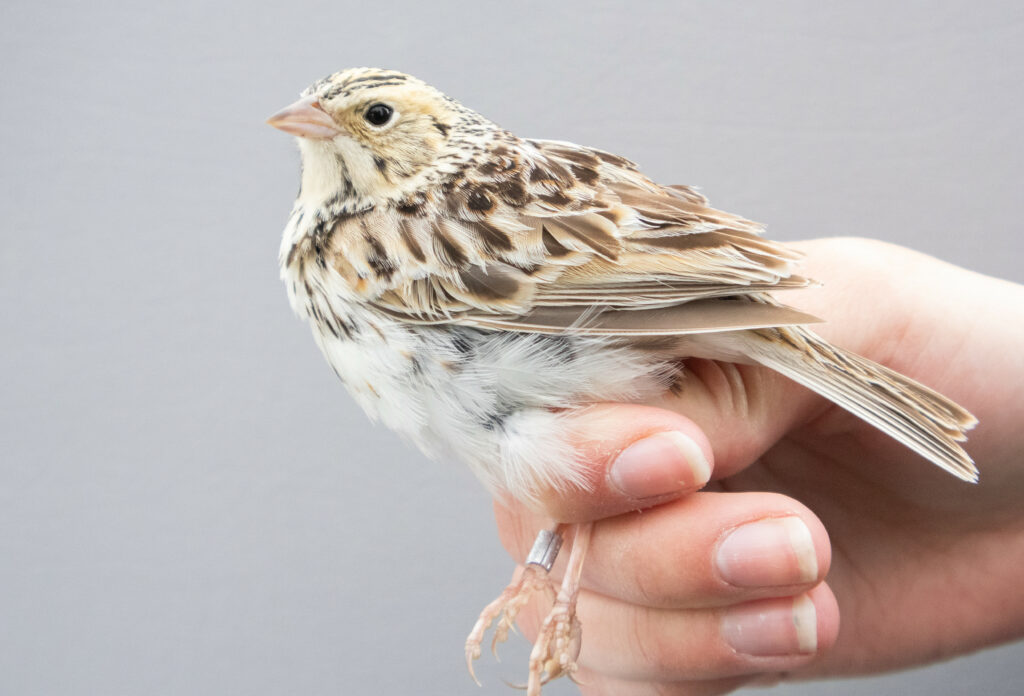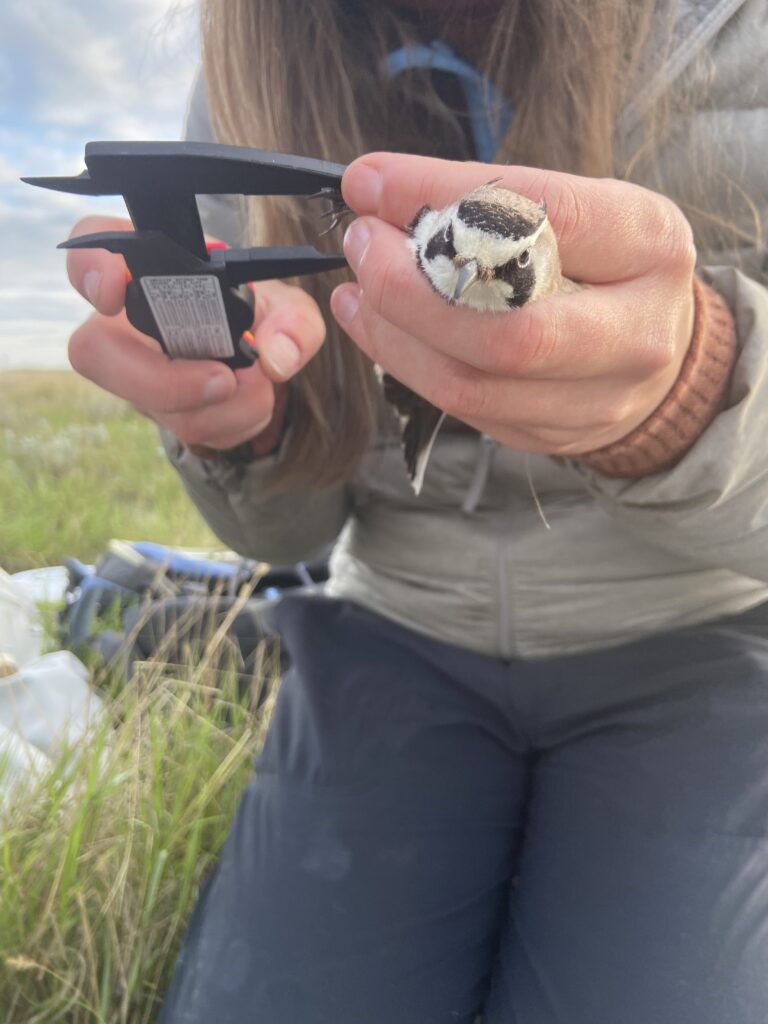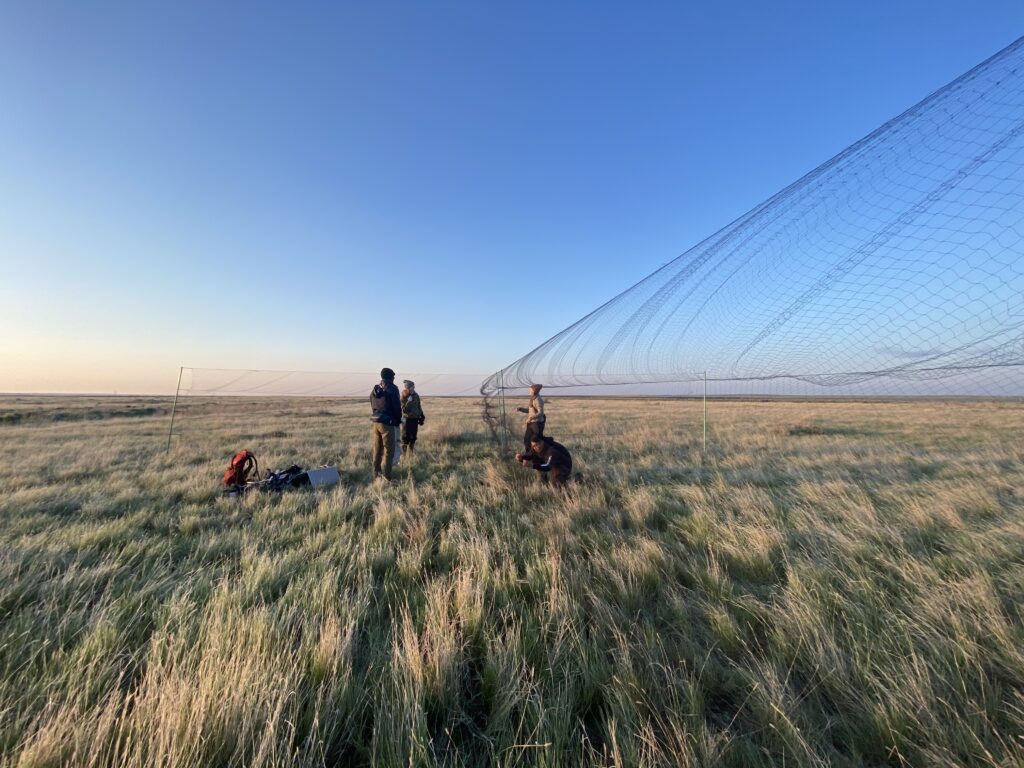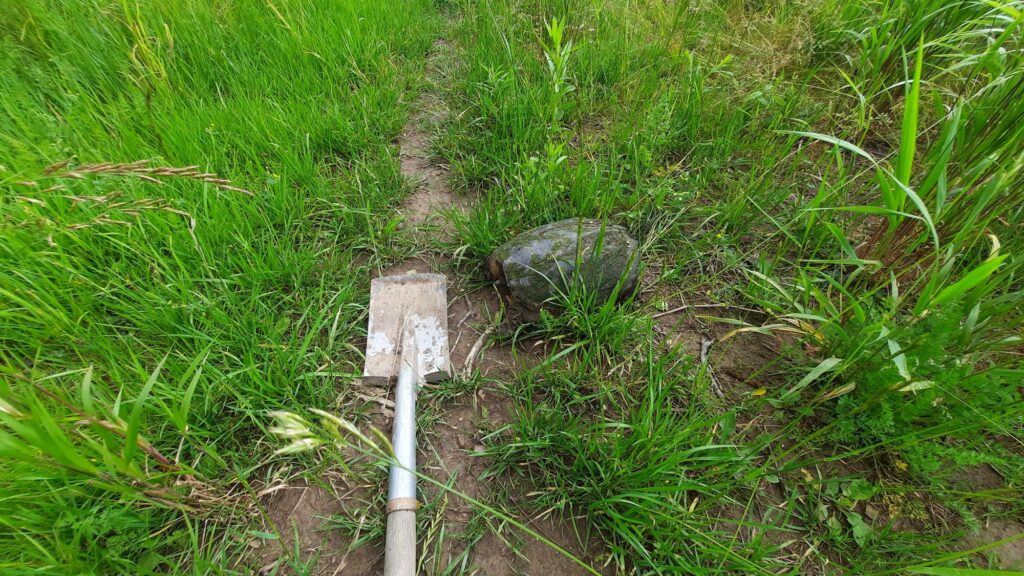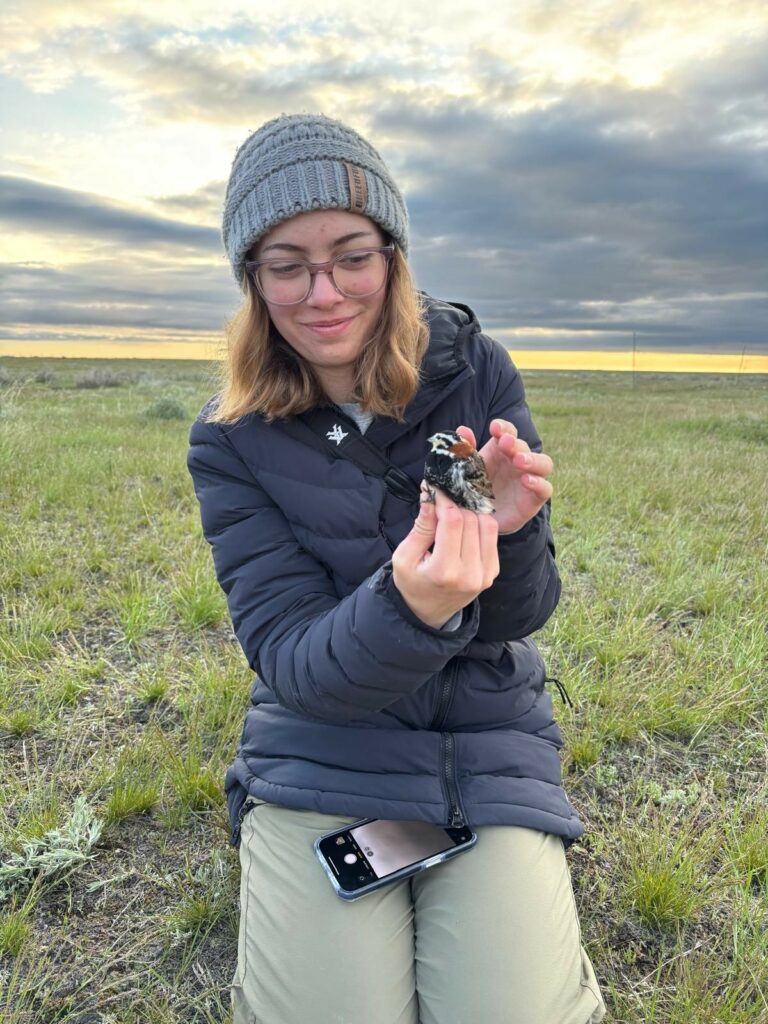
Me with my first CCLO (Chestnut-collared Longspur) in hand, a very beautiful bird to get to see up close! -SGS
This summer I took a job with Canadian Wildlife Service – Prairie Region, to get some more experience with motus tagging, point counts and just more exposure with fieldwork. We started out the field season in Nashlyn, a grazing co-op in southwest Saskatchewan. This spot is owned by Environment Canada, and so it acted as our training grounds for the first two weeks. During this time we familiarized ourselves with the various protocols: point counting, rapid habitat surveys, and banding. We also prepped and deployed ARUs (Automatic Recording Units) to record bird song and document which birds are present in different areas of the pasture. Rick and I have been speculating that adding a couple ARUs to our monitoring at the Haldimand Bird Observatory’s Hurkman’s Farm site could be a great way to sample breeding birds and migrating birds alike as they use the site.
While at Nashlyn I also got to prep a few motus tags, which was tedious but also a lot of fun. We joked that it’s like arts and crafts for biologists. We were cutting and gluing harnesses onto the tags themselves, and also checking that all the tags were active. That week my supervisor gave us all a tutorial on attaching the harnesses to the birds, which I will get to do myself later in the field season.
We are targeting Chestnut-collared Longspurs, Thick-billed Longspurs, Horned Larks, and Sprague’s Pipits to attach motus tags to. This will allow us a better understanding of their fall migration movements, and in some cases their return migration in the spring. We are also targeting Baird’s Sparrows, Brewer’s Sparrows, Grasshopper Sparrows, and Chestnut-collared Longspurs to take tail feather samples to be used by the Bird Genoscape Project. In previous years at HBO we have also taken tail feather samples to be sent to the Bird Genoscape Project. If you wish to learn more about this project, you can take a look at their website here: https://www.birdgenoscape.org/making-genoscapes/
As you might imagine, catching birds in mist nets works a little differently in a wide open prairie. We can’t just set the nets up and expect a bird to fly in as its going about its day. Instead we have to take a more active approach! We have the nets set out in a “t” shape, one across and then two coming out from either side perpendicular to the main net. We use a speaker with a playback and a decoy to draw a bird in, and then we run towards it to flush it into one of the nets. Here are some of the fruits of our labour:
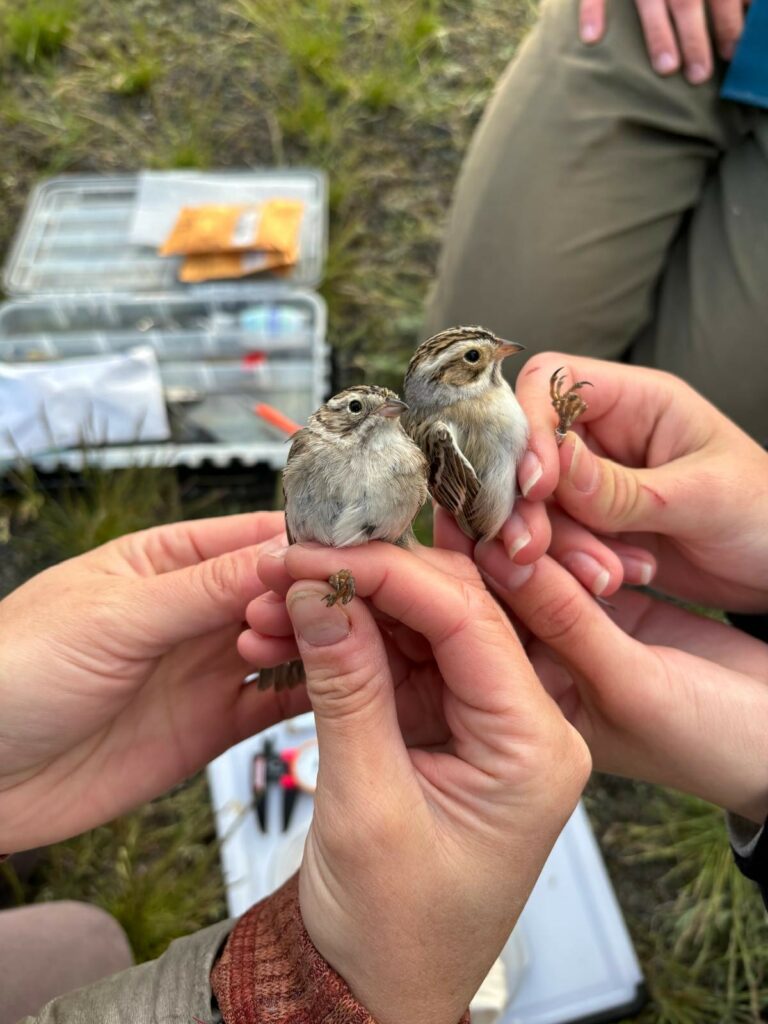
A comparison photo of a Brewer’s Sparrow (left) and a Clay-coloured Sparrow (right). We aren’t targeting CCSPs but this one just happened to fly into a net while were were banding another bird – a rare fluke. -SGS
For the past three weeks we have been point counting in Saskatchewan, first at Grasslands National Park and then in the Big Muddy region in the central-southern part of the province. We have had many cool finds including Burrowing Owls, Rock Wrens, Yellow-breasted Chats, and Common Poorwills, among the other more common grassland species. We have just recently arrived in western Alberta, in the fescue grasslands in the foothills of the Rockies. Here we will soon be point counting at Piikani First Nation, and then in southern Alberta. After the point counts are finished we will have 3-4 weeks of banding, first in Twin River Alberta, then Nashlyn Saskatchewan, and finally Ellis Archie Manitoba. It has been a wonderful experience so far, with a great field crew, beautiful landscapes and amazing birds and wildlife.
Sarah
And In Other News:
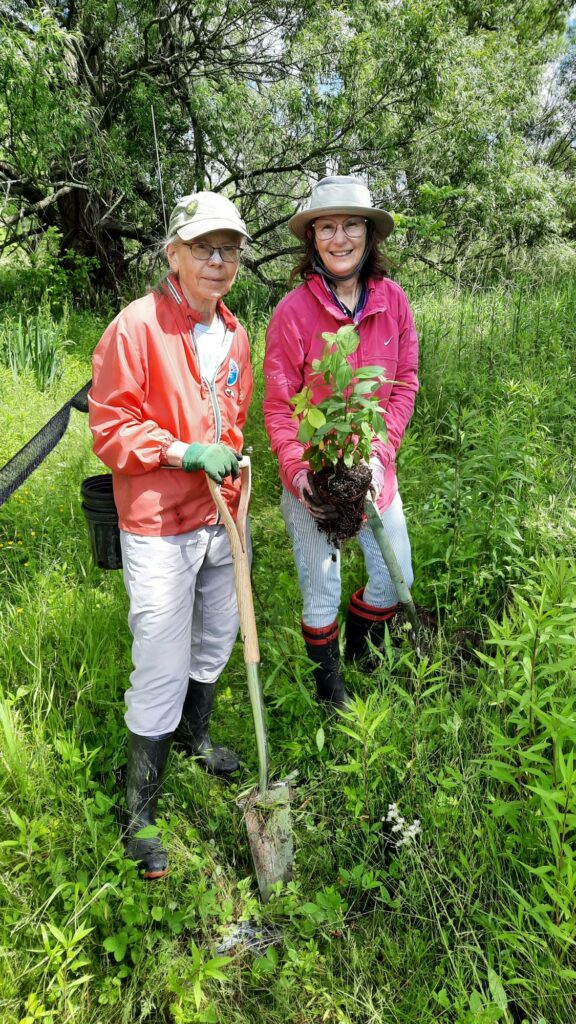
Diane (left) and Mary-Ellen (right) were out on the weekend to plant dogwoods, developing (hopefully) a stand at the east end of the banding area to attract migrants. -DOL

